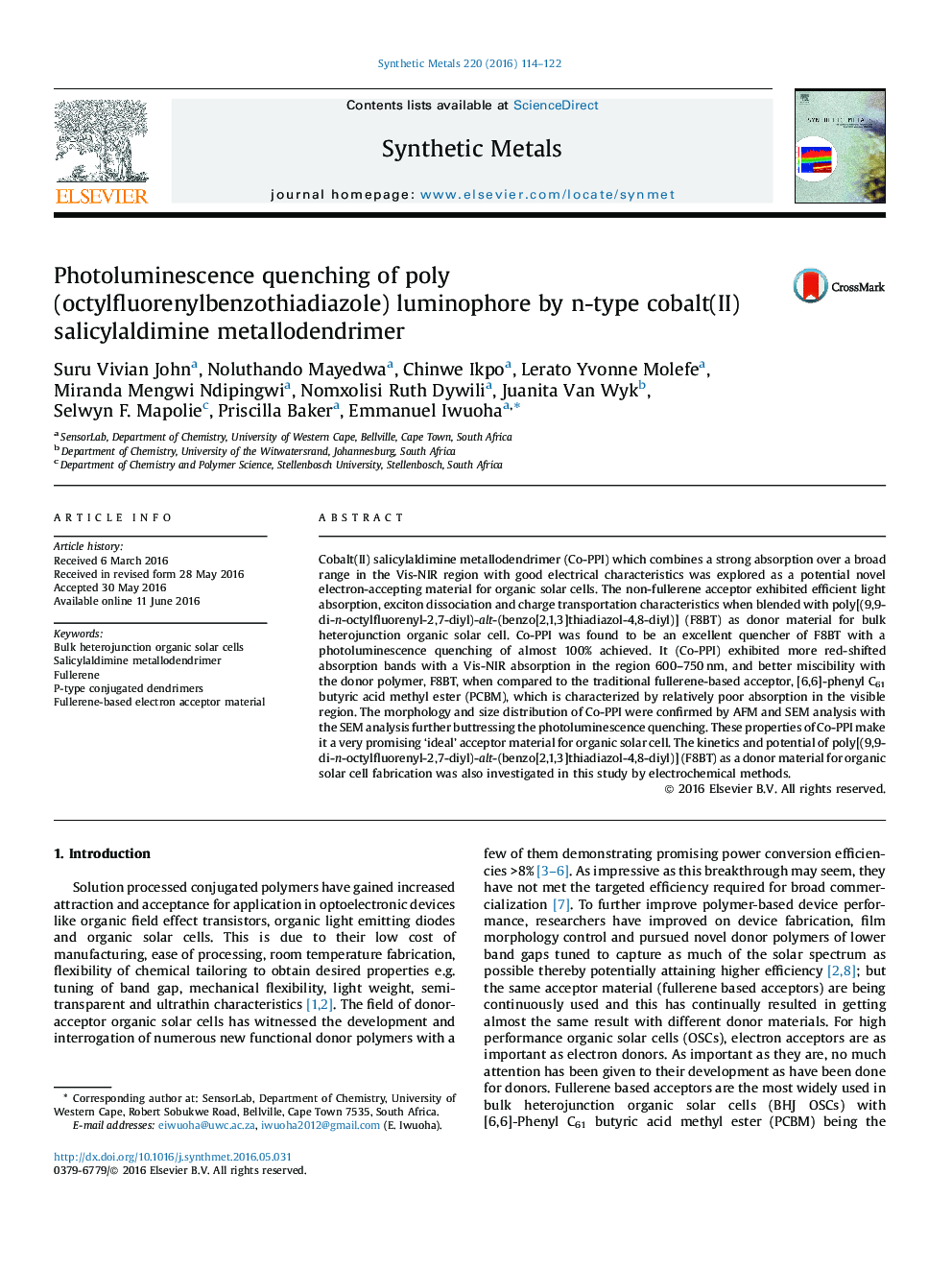| کد مقاله | کد نشریه | سال انتشار | مقاله انگلیسی | نسخه تمام متن |
|---|---|---|---|---|
| 1440072 | 1509357 | 2016 | 9 صفحه PDF | دانلود رایگان |

• Co-(II) salicylaldimine metallodendrimer is a promising acceptor for solar cells.
• Electron transfer resulted in virtually 100% photoluminescence quenching of F8BT (donor) by Co-PPI (acceptor).
• Broad absorption was observed in the visible region.
• In addition to serving as an acceptor, Co-PPI contributes to light harvesting.
Cobalt(II) salicylaldimine metallodendrimer (Co-PPI) which combines a strong absorption over a broad range in the Vis-NIR region with good electrical characteristics was explored as a potential novel electron-accepting material for organic solar cells. The non-fullerene acceptor exhibited efficient light absorption, exciton dissociation and charge transportation characteristics when blended with poly[(9,9-di-n-octylfluorenyl-2,7-diyl)-alt-(benzo[2,1,3]thiadiazol-4,8-diyl)] (F8BT) as donor material for bulk heterojunction organic solar cell. Co-PPI was found to be an excellent quencher of F8BT with a photoluminescence quenching of almost 100% achieved. It (Co-PPI) exhibited more red-shifted absorption bands with a Vis-NIR absorption in the region 600–750 nm, and better miscibility with the donor polymer, F8BT, when compared to the traditional fullerene-based acceptor, [6,6]-phenyl C61 butyric acid methyl ester (PCBM), which is characterized by relatively poor absorption in the visible region. The morphology and size distribution of Co-PPI were confirmed by AFM and SEM analysis with the SEM analysis further buttressing the photoluminescence quenching. These properties of Co-PPI make it a very promising ‘ideal’ acceptor material for organic solar cell. The kinetics and potential of poly[(9,9-di-n-octylfluorenyl-2,7-diyl)-alt-(benzo[2,1,3]thiadiazol-4,8-diyl)] (F8BT) as a donor material for organic solar cell fabrication was also investigated in this study by electrochemical methods.
Journal: Synthetic Metals - Volume 220, October 2016, Pages 114–122